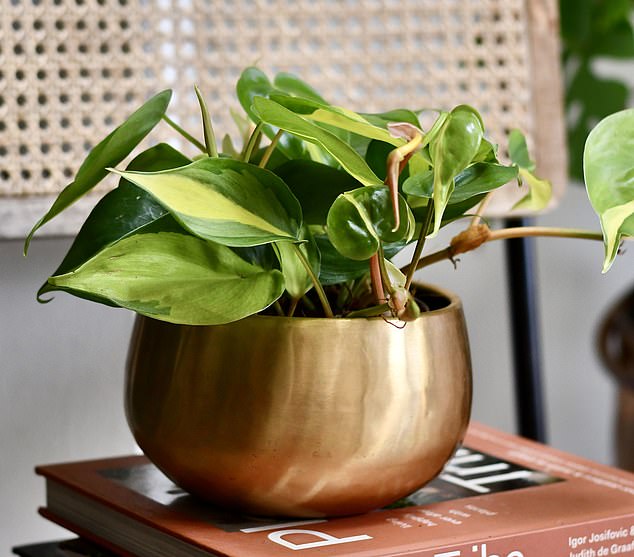Are you a ‘plant murderer?’ Scientists reveal the room in your home where potted vegetation may thrive – and can grow by up to FIVE TIMES the size
Even self-proclaimed green thumbs are guilty of being “plant killers.”
There may have been too much water, insufficient sunlight, or the pot was placed in an inappropriate area.
But scientists have revealed one room in the house that can provide the right environment and lighting for your potted plants: the solarium.
A recent study conducted by researchers in the United Kingdom found that rooms filled with humidity can boost plant growth five-fold.
The team suggested that a bright, humid room mimics a plant's natural environment, as most people choose tropical plants to decorate their homes.
Pothos or “devil's ivy” on a shelf in the bathroom. The homeland of this plant is French Polynesia in the South Pacific. A study of houseplants showed that pothos plants living in high humidity grew 158 percent more than their counterparts growing in ambient humidity.
“Plants that love moisture are great for bathrooms and will thrive because the bathroom replicates their natural tropical climate,” Morag Hill, co-founder of The Little Botanical, told Homes & Gardens. Houses and gardens.
“It's often hot, humid and bright, three things moisture-loving plants need to be happy and healthy.”
Many of our common houseplants are understory plants from tropical or subtropical regions of the world.
In one study conducted in February, researchers in Norway found that the bathroom can be one of the humidest rooms in the house, making it feel like a homey taste of those plants.
If multiple people share a bath, plants have more moisture to absorb.
Three popular types of houseplants that live in humid conditions grew much larger than their cousins that grow in ambient humidity, according to a February study. Stady In the magazine Plant, cell and environment.
Researchers at the University of Nottingham looked at three common houseplants: anthurium, pothos (or devil's ivy), and heartleaf philodendron.
The team grew the plants in dedicated growth chambers where they could control the environment.

Philodendron heart plant is native to Central America and the Caribbean. It will survive dry air, but will thrive in high humidity
One was maintained at 45% humidity, the other at 99%, and both rooms received the same amount of light and heat.
Three months later, the scientists measured the difference between the two groups.
The team found that each plant in the high-humidity room grew much larger than its counterpart.
The volume of low-humidity pothos grew by 432 percent over the study period, while the volume of high-humidity pothos increased by 682 percent—an increase of 58 percent.
Same with heart leaf philodendron.
The sample with low humidity increased by 114% over its initial weight, but the sample with high humidity increased by three times as much: 352%.
Anthuriums grown at high humidity achieved the greatest increase in biomass.
It has grown 94 percent larger than its initial size, 5.5 times the volume of low-humidity, which grew by only 17 percent.
But not all experts agree that the bathroom is the best place for plants.
“The perception that the bathroom has higher humidity is often overstated,” houseplant expert Darryl Cheng told DailyMail.com.
Cheng is the author of “The New Plant Parent” and creator of the House Plant Journal.
'Yes, the humidity rises during the shower but it quickly returns to the average room temperature and humidity once you open the door. We shouldn't treat the bathroom as if it will always have a higher humidity than the rest of the house – it's not a greenhouse!'
But if your bathroom has windows or a skylight, you may find that your plants do well there.
A combination of bright light and high humidity can make many houseplants thrive.
After all, light is the most important thing to consider, Cheng said — “namely, the size of the window, which is probably not the largest for most bathrooms.”
His solution? Place some plants in rotation.
“Buy three plants, keep two of them on a large windowsill and one in the dark bathroom,” he said.
“Every month or two, rotate the vervain with one of the windowsill plants so it can renew itself through photosynthesis.”
Having two plants on standby will ensure that they recover long enough.
Cheng has three plants that he believes are hardy enough to do well in this rotation: pothos, ZZ, and snakehead.
(Tags for translation) Daily Mail
